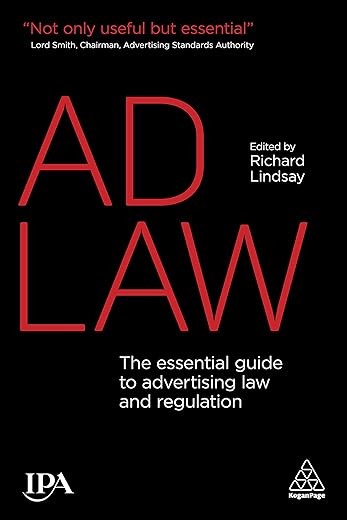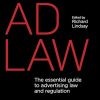Ad Law: The Essential Guide to Advertising Law and Regulation
£40.20
Ensuring marketers and advertisers are aware of the laws and regulations of advertising is now more important than ever. If a campaign is found to be potentially offensive, harmful, or misleading, it can ‘go viral’ in just the click of a mouse, and the implications of breaching those laws are likely to be both damaging and costly to a brand’s reputation, its creative work, and the strategic planning behind it.
Now offering level-headed advice on everyday questions encountered when designing and running promotional campaigns, Ad Law, the new book from the Institute of Practitioners in Advertising (IPA), is the ultimate handbook to the law and regulation of advertising and marketing communications. Containing guidance based on real-world experiences from media and advertising lawyers and the IPA legal team, this book expertly leads readers through the most applicable laws and regulations, common pitfalls and the practicalities behind them, such as the new industry-standard client/agency agreement.
Covering issues such as intellectual property, privacy and defamation, plus the self-regulatory framework, Ad Law is the ideal companion for any advertising and marketing professional, or lawyer working within these sectors.
Read more
Additional information
| Publisher | 1st edition (3 Sept. 2016), Kogan page |
|---|---|
| Language | English |
| File size | 4843 KB |
| Text-to-Speech | Enabled |
| Screen Reader | Supported |
| Enhanced typesetting | Enabled |
| X-Ray | Not Enabled |
| Word Wise | Enabled |
| Sticky notes | On Kindle Scribe |
| Print length | 397 pages |
| Page numbers source ISBN | 0749472898 |










by Bobby Tables
This is an essential, at-a-glance reference to current law and regulations affecting marketing and advertising activities in the United Kingdom. Even if you don’t necessarily have operations in that country, the book can arguably still give you a lot of good intelligence to consider possible problems that may be relevant elsewhere.
Written with the practitioner in mind, this book is designed to be accessible and informative without recourse to impenetrable legal mumbo-jumbo. Used correctly, this book could save your corporate skin and possibly prevent some unwelcome headlines and damage to its reputation. Many contributors have added their expert views and commentary to this book, which has been carefully curated and made very accessible by the publishers. Ignorance is thus no excuse!
As well as a look at the regulatory systems that are in force, the book drills down through various topics such as intellectual property, competition law, consumer protection and data protection. A whole section guides the reader through compliance and helps them assess if they need to undertake remedial activities before it is too late. Inspiration may be taken from looking at current key themes in advertising and how to ensure compliance. One section looks at specific industry sectors and the problems that may be more specific to them and matters are rounded off with consideration towards business issues, contracting and supplier management.
It is certainly a useful guide and a lot more than just a “book on advertising” as you might otherwise have thought of it. For those who have a specific need for this kind of knowledge it may be a must-read; for everybody else, possibly with a peripheral connection to marketing and advertising (or even general senior management) It may be a “could-read”.